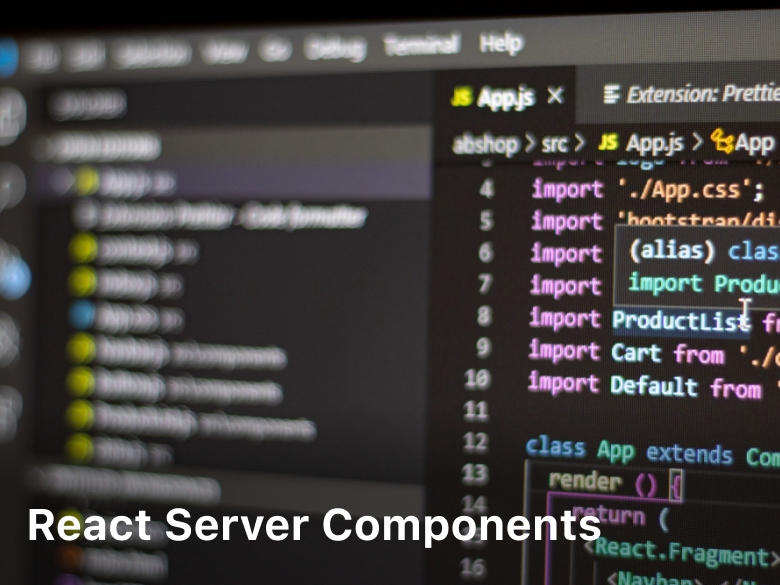React Server Components
React Server Components – Dive into the world of React Server Components and discover how they are transforming frontend development by enhancing performance and user experience. Learn what React Server Components are, how they work, and why they’re a game-changer for web applications.
What are React Server Components?
React Server Components are a cutting-edge feature in the React ecosystem designed to enhance frontend performance by optimizing how components are rendered and shipped to the browser.
Unlike traditional React components, which are bundled with the rest of the application’s code, React Server Components are fetched on-demand from the server when they are needed.
This innovative approach allows developers to send only the necessary components to the client, reducing initial load times and enhancing user experience.
How Do React Server Components Work?
React Server Components work by breaking down complex user interfaces into smaller, reusable units that can be loaded and rendered on the server side.
When a user interacts with a part of the application that requires a specific component, the server sends that component to the client. This on-demand rendering minimizes the initial JavaScript payload and speeds up page loads, especially on slower networks or devices.

Benefits of Using React Server Components
- Improved Performance: By loading components on-demand, React Server Components significantly reduce the initial load time of web applications, leading to a faster and smoother user experience.
- Reduced Payload Size: Since only required components are fetched, the size of the JavaScript bundle sent to the client is minimized, leading to quicker page loads and improved performance metrics.
- Enhanced User Experience: With faster load times, users can interact with the application sooner, leading to higher engagement and satisfaction.
- Efficient Resource Utilization: React Server Components optimize server resources by rendering components on the server side, freeing up client-side resources for interactivity.
- Simplified Development: Developers can focus on building individual components without worrying about their impact on the overall application’s performance.
Implementing React Server Components: A Step-by-Step Guide
Step 1: Set Up Your Environment
Before you can start, ensure that you have the latest version of React installed and a compatible server environment.
Step 2: Define Server Components
Identify parts of your application that can be split into server components. Create these components as separate entities in your codebase.
Step 3: Update Server Configuration
Configure your server to handle the fetching and rendering of server components. This involves setting up routes and endpoints for serving server component data.
Step 4: Implement Client-Side Logic
Modify your client-side code to work with Components. Use the new ReactServerComponent API to fetch and render components on the client side.
Why Do We Need Server Components?
In the dynamic realm of web development, the pursuit of faster load times, enhanced user experiences, and efficient resource utilization is an ongoing journey.
Enter React Server Components, a revolutionary approach that addresses these challenges by redefining how components are handled in web applications.
1. Optimizing Initial Load Times
In the age of instant gratification, slow loading times can lead to user frustration and abandonment. Traditional frontend applications often load a substantial amount of JavaScript during the initial page load, resulting in sluggish performance.
React Server Components tackle this issue head-on by fetching and rendering components on-demand. By serving only the necessary components, React Server Components drastically reduce the initial payload, leading to faster load times and an improved user experience.
2. Streamlining Resource Utilization
Resource management is a vital aspect of web development, especially in applications with complex user interfaces. Traditional approaches involve loading all components, whether they’re immediately needed or not, contributing to wasted resources.
React Server Components optimize resource utilization by rendering components on the server side and delivering them to the client as required. This not only conserves client-side resources but also allows for efficient use of server resources, resulting in a more responsive and fluid application.
3. Enhancing Performance on Slower Networks
In an increasingly mobile-centric world, catering to users with varying network conditions is essential. Users on slower networks often face longer loading times and reduced functionality due to heavy client-side rendering.
React Server Components mitigate this issue by offloading rendering tasks to the server, ensuring that users with slower connections can still access and interact with the application quickly and efficiently.
4. Simplifying Development Workflows
Developers are continually striving for tools and technologies that simplify the development process without compromising performance. React Server Components offer a streamlined approach to building complex user interfaces.
Developers can focus on creating individual components without worrying about their impact on the overall application’s performance. This separation of concerns not only accelerates development but also encourages modular and maintainable codebases.
5. Enabling Dynamic and Personalized Experiences
Modern web applications often require dynamic and personalized content to engage users effectively. Traditional static rendering can limit the ability to create tailored experiences.
React Server Components empower developers to serve personalized content on-demand, based on user interactions or preferences. This dynamic approach allows for the creation of immersive and interactive experiences that resonate with users.
6. Scalability and Future-Proofing
As applications grow and evolve, scalability becomes a critical factor. Traditional approaches to rendering can lead to bottlenecks and performance degradation as the application scales.
React Server Components, with their server-side rendering capabilities, offer a more scalable solution. By distributing rendering tasks between the server and client, React Server Components help future-proof applications, ensuring optimal performance even as user bases expand.
Conclusion
React Server Components are poised to reshape the frontend development landscape by offering a novel approach to optimizing web application performance.
By fetching and rendering components on-demand, these components reduce load times, enhance user experience, and streamline development workflows.
As the web continues to evolve, embracing innovations like React Server Components becomes crucial for delivering high-quality, high-performing applications that captivate and engage users in new and exciting ways. So, dive into the world of React Server Components, and unlock the potential of next-level frontend performance.




